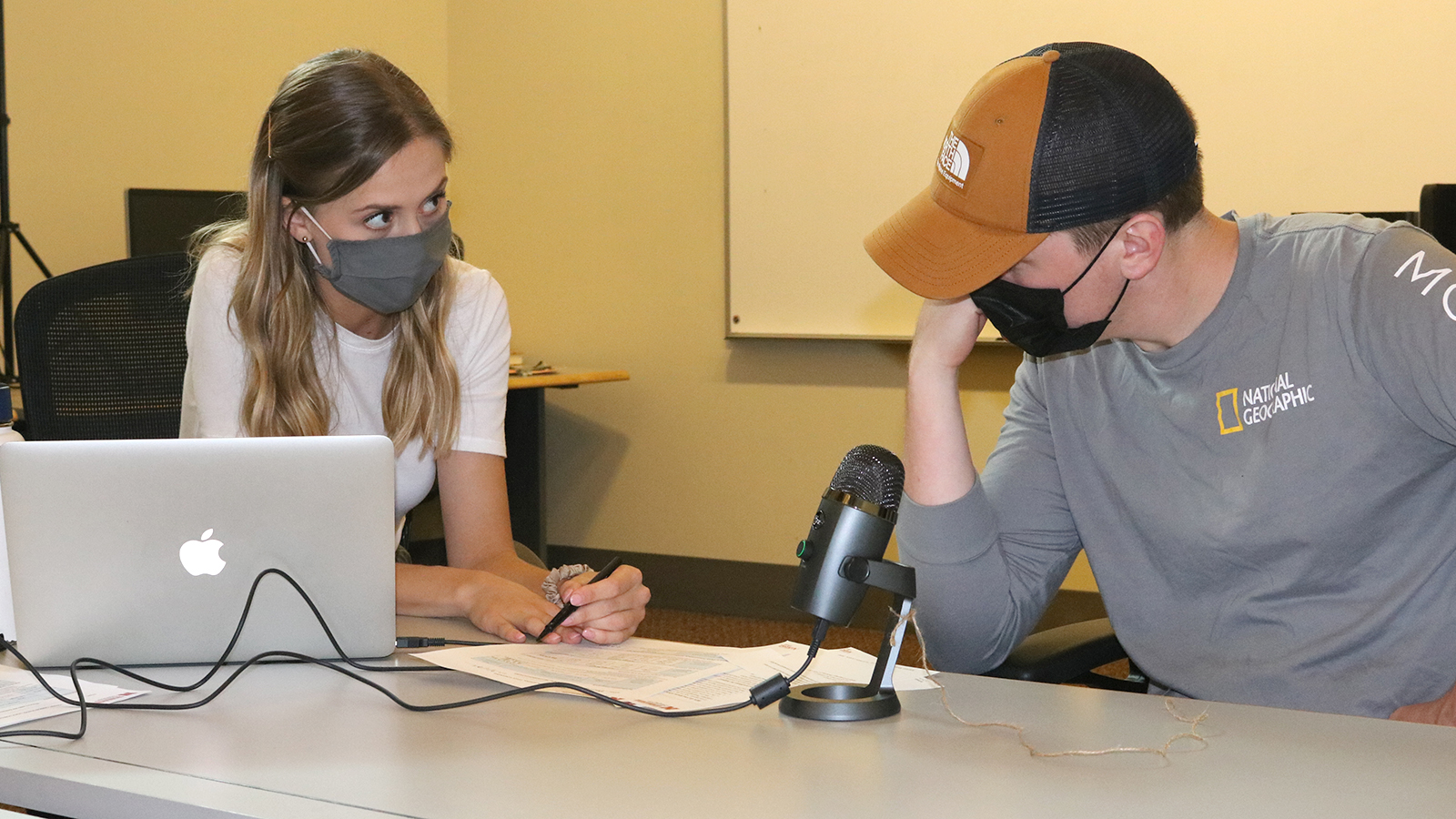
Speech-language pathology program provides voice screenings for theatre, film students
30 Sep 2021 By Kelcey Buck
A collaborative project a few years in the making finally came to fruition the end of August as five graduate students in the University of Nebraska-Lincoln’s speech-language pathology program provided voice screenings for nearly 30 theatre and film students in Nebraska’s Johnny Carson School of Theatre and Film.
Abby Pelster, a lecturer and speech-language pathologist in the Department of Special Education and Communication Disorders, and Ann Marie Pollard, an assistant professor of practice in the Carson School, have been discussing this project for a while, but were delayed in getting it off the ground due to the coronavirus pandemic.
In two sessions Aug. 31 and Sept. 1, their idea became reality as Pelster and fellow lecturer and speech-language pathologist Jessie Kohn oversaw the speech-language pathology master’s students in providing the voice screenings. The screenings provided baseline data about the Carson School students’ voices, including fundamental frequency, which is the perceived pitch of a speaker’s voice in connected speech; pitch range and volume range, which measure the highest and lowest pitches a singer can produce, and the quiet to loud voice ability, respectively; and vocal quality. The speech-language pathology students also provided the theatre and film students with information about voice care.
The collaboration was a win-win for both groups of students. The information the Carson School students received provides an awareness of how they use their voices, changes to their voices, and how much they use their voices on a daily basis. These data are important to prevent fatigue, reduce vocal fold inflammation, and increase efficiency of the voice to prevent injury.
“The theatre and film students now have baseline data that was used to rule out any incoming concerns with non-optimal vocal functioning and can be tracked across time for changes that might signal a concern with vocal function,” Kohn said. “We want to ensure longevity for their voices.”
“This was also helpful to the Carson School students because they learned that there are objective measurements that can be completed on the voice,” Pelster said. “If they ever need to seek an evaluation or services, they now understand professionals they may work with and tasks that may be completed.”
In return, the speech-language pathology students received valuable experience applying concepts from their voice class and obtaining clinical practice hours, while also providing a functional service to their peers.
“The opportunity to evaluate voice or to work with individuals who have a voice disorder or difference tends to be limited for our students in comparison to other types of communication disorders or differences,” Kohn said. “It was great to see them interact with other students in a different part of the campus with different majors, but with a shared background of voice and the importance of voice.”
Now that this first round of screenings is complete, Pelster and Kohn are looking forward to continuing the collaboration with Pollard and her students in the future. They hope to re-screen this year’s participants annually until they graduate and provide baselines for all incoming freshmen or other transfer students focused on having a professional voice career.
“We have also discussed the potential for collaborative teaching on vocal hygiene and use across departments,” Pelster said.
Special Education and Communication Disorders
College of Education and Human Sciences